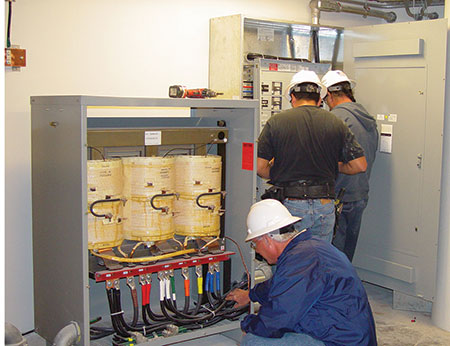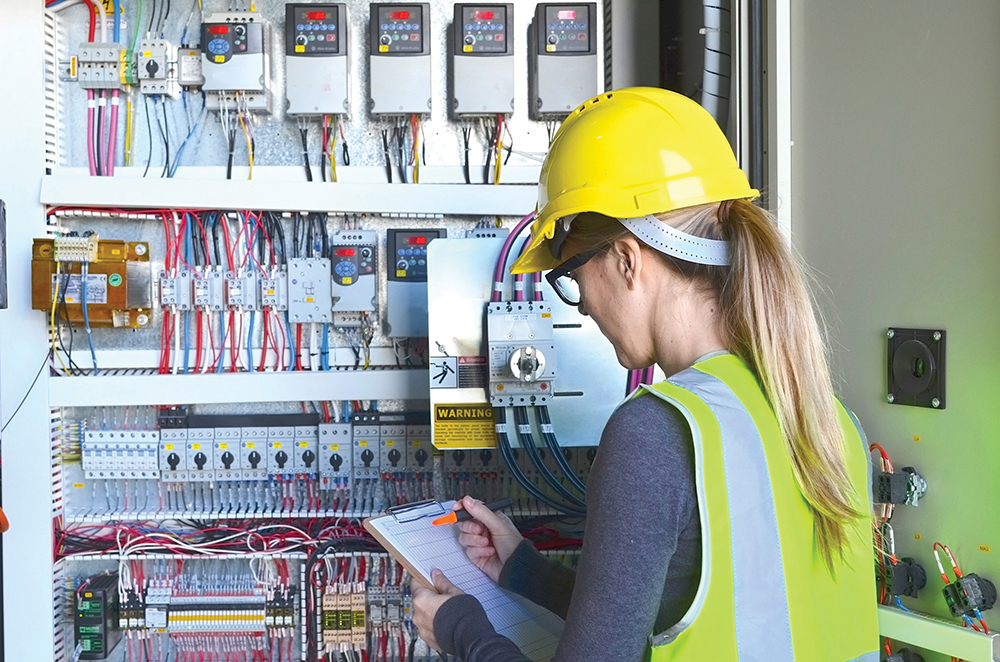Why are electrical inspectors so busy?
What do they do anyway?
It is generally understood that the Authority Having Jurisdiction (AHJ) is responsible to evaluate and approve electrical equipment installations. These responsibilities are largely assigned to the AHJ by paragraph 110.2 of the National Electrical Code (NEC). It says that equipment is acceptable only if approved, where approved means “acceptable to the AHJ.” Of course, there are many distinctions, exceptions and deviations. But, still, as a general rule in the United States, it is the AHJ (typically the local electrical inspector) that carries out this responsibility. And it is not trivial. The liability associated with electrical safety can be enormous, and the amount of knowledge required to enforce equipment safety can be overwhelming.
At the back of the NEC, there is a list of more than 200 standards that are directly relevant to the safety of electrical equipment. To make matters worse, many jurisdictions have been forced to reduce the number of inspector positions due to budget cut backs, so the workload for the remaining inspectors is even heavier. It seems the number of new installations, and especially remodels, upgrades, and additions to existing facilities are on the upswing. The workload, complexity, and the importance of the inspector’s job are all growing. What is the poor inspector to do?
Fortunately, help is on the way.
Actually, it is already here.
Over the past 30 years, third-party organizations called Field Evaluation Bodies (FEBs) have been created for exactly this reason—to help the AHJs with the task of evaluating electrical equipment safety—especially, equipment that has been modified, is custom made, or has been relocated. In the U.S., the process FEBs follow for evaluating electrical equipment safety is called field evaluation (FE).
What is an FEB? What do they do and how do we know if they’re any good?
In 2011, the National Fire Protection Association (NFPA) issued two landmark documents:
NFPA 790 – Standard for Competency of Third-Party Evaluation Bodies (FEBs)
NFPA 791 – Recommended Practice and Procedures for Unlabeled Electrical Equipment Evaluation
For the history of these documents, see the accompanying article by Chuck Mello of Underwriters Laboratories. Mello was a key person responsible for the development of these documents. The 790 standard defines an FE as “the process used to determine conformance with requirements for one-of-a-kind, limited production, used, or modified products that are not listed or field labeled under a certification program.”
And the 790 standard defines an FEB as “an organization, or part of an organization, that performs field evaluations of electrical or other equipment.”
As Mello says, the 791 standard addresses the question of “how to” and the 790 standard addresses the question of “who can.”
What about Nationally Recognized Testing Laboratories?
Don’t they evaluate electrical equipment?
Yes, definitely. The Department of Labor (DOL), through the Occupational Health and Safety Administration (OSHA) and provisions of the Code of Federal Regulations, has established a process for certifying third-party organizations called Nationally Recognized Testing Laboratories (NRTLs). The DOL administers the NRTL program and certifies NRTLs. NRTLs do indeed evaluate and label equipment.
What is the difference between an FEB and a NRTL? Are they the same?
Can a NRTL be an FEB?
The basic function of FEBs and NRTLs is the same. They both perform product safety testing—evaluating and certifying the safety of electrical equipment, but how these organizations are certified and details of how they perform their evaluations can be quite different.
NRTLs must comply with OSHA provisions and are certified by the DOL. NRTLs perform the service stipulated in CFR 1910.399 (1) which states that an installation of equipment is acceptable to the Assistant Secretary of Labor if it is accepted, or certified, or listed, or labeled, or otherwise determined to be safe by a nationally recognized testing laboratory pursuant to §1910.7. NRTLs provide product safety testing and certification primarily at the point of manufacture. Their listing process involves rigorous (and often destructive) testing of representative samples of a product and the periodic factory follow-up verification and inspection (usually 2-4 times per year) to ensure new production exactly mirrors the tested samples.
FEBs must comply with the NFPA 790/791 standards and have the capability to provide product safety testing and labeling primarily in the field. The field evaluation process involves the non-destructive testing and assessment of each device or piece of equipment. The most credible method for certification of FEBs involves accreditation to NFPA 790 by a qualified third-party certifier like International Accreditation Services (IAS). Although some NRTLs offer FEB services, OSHA does not certify FEBs and does not accredit NRTLs to provide FEB services.
How do AHJs decide which FEBs to approve?
Some AHJs uniquely evaluate and may even perform on-site audits of FEBs before deciding which to approve. Of course, this takes a considerable effort. Other AHJs may simply review field evaluation reports provided by prospective FEBs and make their decision about whether to approve based on the quality of the evaluation described by the field evaluation report. Other jurisdictions have begun to rely on NFPA 790 and independent certification organizations to determine which FEBs to approve. Recently the Colorado State Electrical Board considered this very issue and decided on the following policy:
7.11 Article 110.2, “Approval,” in the National Electrical Code, provides that conductors and equipment required or permitted by this code shall be acceptable only when “approved.” The Board will accept conductors and equipment that have been tested and approved by a recognized testing agency such as Underwriters Laboratories, Inc. OR FIELD-EVALUATED BY A CERTIFIED FIELD EVALUATION BODY (FEB) IN ACCORDANCE WITH NFPA 790 AND 791. FEB CERTIFICATION IS TO BE PROVIDED BY INTERNATIONAL ACCREDITATION SERVICES (IAS) OR EQUAL. The Board reserves the right of its inspectors to reject any conductors or equipment that in their opinion may be unsafe or injurious to life or property.
IAS is a nonprofit accreditation services provider and a subsidiary of the International Code Council (ICC). For a list of FEBs accredited by IAS, check their website at: http://www.iasonline.org/Field_Evaluation_Bodies/FEB.html?wb48617274=30E2A18F
How are the NRTLs and FEBs helping inspectors?
Once equipment is deemed to be in compliance with applicable standards, the FEB or NRTL applies a label. By looking for a NRTL mark or FEB label, an inspector will have information about the standards to which the product has been listed or labeled. The listings performed by NRTLs and field evaluations performed by FEBs are based on product safety standards developed by U.S.-based, standards-developing organizations and often issued under the accreditation of the American National Standards Institute (ANSI). Occasionally, a listed or labeled product does not look quite right or has obvious violations. When this happens, the electrical inspector should call the NRTL or FEB. The testing organization can determine if it is a counterfeit label, if the equipment was modified, or if a manufacturer is incorrectly manufacturing the product. In any case, the NRTL or FEB has a process to review, evaluate, and stop problems in the future. Help is definitely available for the inspector. Through their listing and labeling efforts, FEBs and NRTLs can help the busy inspector with product acceptance and approval.
How do all these elements come together to help the busy electrical inspector?
AHJs now have recognized consensus standards and consistent, reliable methods they can reference. They can specify that any FEB performing field evaluations in their jurisdiction must follow the procedures of NFPA 791. Similarly, they can require that the FEB organization comply with 790. Whether AHJs perform their own evaluations of FEBs or accept the FEB certifications provided by organizations like International Accreditation Services (IAS), busy inspectors can have confidence in the field evaluations performed by FEBs. They will come to recognize the labels of experienced FEBs, which will ultimately save them time in the process of evaluating and approving electrical equipment installations.











Find Us on Socials